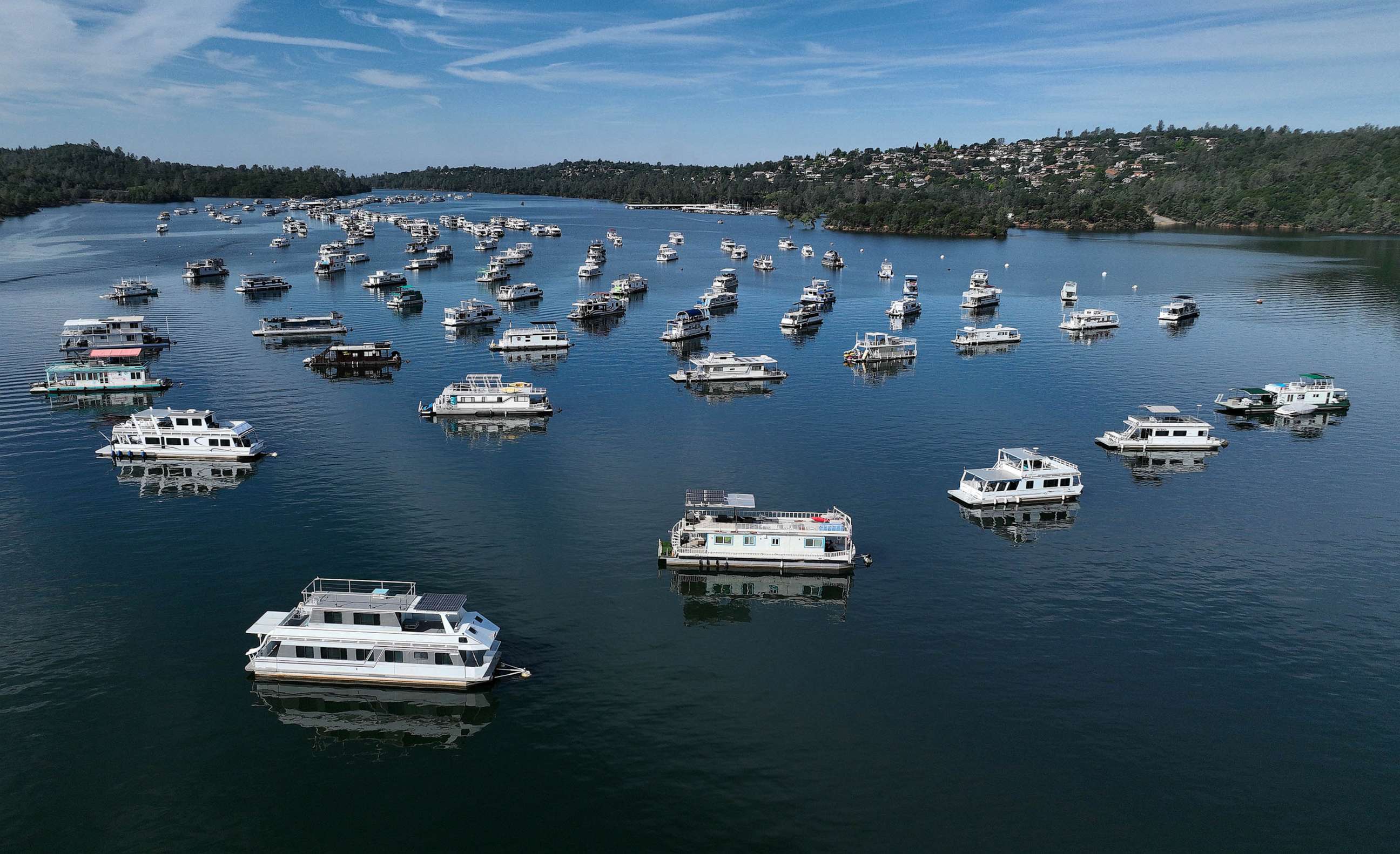Photos show dramatic difference in water levels at Lake Oroville from 2021 to today, now at 100% capacity
A record wet season has led to California's second-largest reservoir filling up.
California's Lake Oroville, one of the many important reservoirs in the West that reached critically low levels during the height of the megadrought, is now filled to the brim.
Before and after images of Enterprise Bridge offer a sharp comparison for Lake Oroville between July 22, 2021, and June 15, 2023, after the reservoir, the second-largest in the state, reached full pool for the first time since 2012 -- and only the second time in the past 15 years, according to the California Department of Water Resources.

In September 2021, water levels in Oroville dipped to their lowest ever at 628.47 feet, at just 24% capacity. As of Monday, water levels neared 900 feet -- more than 100 feet higher than this time last year. Not only are water levels at the lake currently measuring at 100% capacity, they are at 127% of where they should be around this time of year, according to the DWR.
Storage at Lake Oroville has risen more than 240 feet and gained more than 2.5 million acre-feet of water since Dec. 1, according to the DWR.
The improving drought conditions in California are "a stark difference" from the last three years, California Department of Water Resources director Karla Nemeth said in an emailed statement to ABC News.
Oroville can hold 3.5 million acre-feet of water, with the peak flow from the snowpack in the Sierra Nevada mountains occurring in April as temperatures began to rise quickly in the region. Some spots in the Sierra Nevada mountains received up to 200% more snowpack than normal due to repeated rounds of atmospheric rivers that slammed the West Coast during the winter season.

Melting snowpack continues to contribute to nearly full reservoirs in the state.
Lake Shasta, California's largest reservoir located about 120 miles north of Lake Oroville, is also close to full pool, nearing 97% capacity as of last week, according to the California Department of Water Resources. The San Luis Reservoir in Merced County, the fourth-largest in the state, is currently 99% full.
"It’s refreshing to see Lake Oroville and other State Water Project (SWP) reservoirs like San Luis near or at capacity," Nemeth said.
In April, when Lake Oroville was measuring at 91% capacity, the DWR announced the State Water Project would be delivering 100% allocation for the first time since 2006.
The department is continuing to optimize operations for water storage and environmental protection for the water delivery needs to 27 million Californians and 750,000 acres of farmland, Nemeth said. These operations will also allow for carryover storage into next year, she added.

Officials began ordering the strategic release of water as soon as the melting began, fearing the devastating flooding that would occur from the rapid warm-up in temperatures. Those releases could temporarily increase to keep up with increasing water flows and maintain safe water levels.
Earlier this month, total releases to the Feather River amounted to 8,000 cubic feet per second (cfs). An additional 4,000 cfs was released from the Thermalito Afterbay River Outlet, located 5 miles downstream from Oroville, according to the DWS.
The department is "closely" monitoring the inflow of water runoff into the lake -- as well as evaluating the lake levels and downstream needs -- to determine how much water to release at any given time, Nemeth said.
Oroville Lake sits behind the tallest dam in the country, the Oroville Dam at 770.5 feet, and provides hydroelectric power to the Edward Hyatt Power Plant, the fourth-largest in the country.

The plant was forced to close in 2021 when the record-low water levels were too low to flow downstream.
In 2017, nearly 200,000 residents living near Lake Oroville, located about 75 miles north of Sacramento, were forced to evacuate after heavy rainfall damaged the dam's spillways, which could have allowed for uncontrolled floodwaters to release downstream.
Those spillways were rebuilt "to the highest engineering design and safety standards, and continue to operate as intended and designed," Nemeth said.






